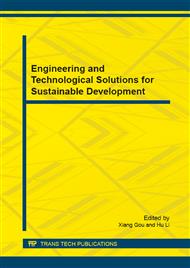p.469
p.474
p.478
p.484
p.489
p.494
p.498
p.504
p.509
Effects of Biomass and Crude Oil Co-Combustion on NO and SO2 Emissions
Abstract:
In this paper, a tube electric furnace is used to process the co-combustion of biomass and crude oil in air atmosphere, the influence of the biomass mass fraction and the temperature on NO and SO2 emissions are analysed. Research shows that with the increasing addition ratio of biomass to crude oil, the amount of NO in per unit heat reduces. This tendency is more apparent at high temperatures. Compared with crude oil, the NO emission of 20% biomass mass fraction at 1100°C is reduced by 25.8% while 19.02% at 700°C. SO2 emission in per unit heat decreases with the increasing biomass mass fraction. This tendency is more apparent at low temperatures. Compared with crude oil The generation of SO2 of 20% biomass mass fraction can reduce 91.5% at 700°C while 36.7% at 1100°C.
Info:
Periodical:
Pages:
489-493
Citation:
Online since:
November 2014
Authors:
Price:
Сopyright:
© 2014 Trans Tech Publications Ltd. All Rights Reserved
Share:
Citation:


